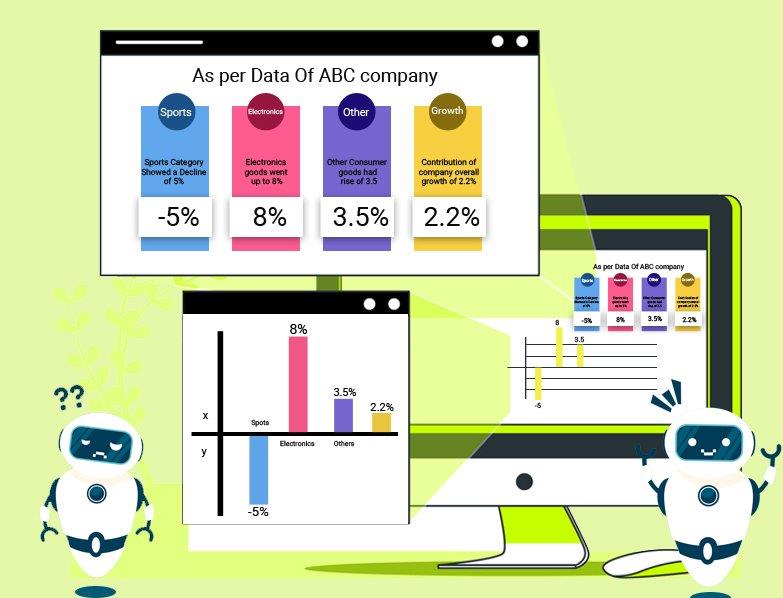Why your Business Needs the Untapped Potential of Automated Narratives
Finance professionals, in half of the businesses surveyed by Deloitte, spent the majority of their time crunching numbers, extracting insights from them, and turning them into reports.
This is in conflict with their actual function and desire- being at the forefront of strategic financial decision making in the organization.
Organizations are generating a lot of data – and everyone wants to mine it. But so much time is spent analyzing the numbers that implementing those insights takes a backseat, and overall organizational efficacy is compromised.
The solution to this problem is found in narrative generation- a form of BI automation that generates automated data insights as though humans had produced them.
Narrative generation can also be described as the act of deriving actionable insights a.k.a automated narratives by wielding the power of natural language generation.
A key player in this field is Automated Insights who’ve built an NLG software- Wordsmith- for business intelligence and analytics.
Storytelling from data
Humans have always had a thing for stories; they are understood more easily and connected with more deeply. Natural language generation software can create these stories through templates, rules-based workflow, and other intent-driven approaches.
That is what has been happening at the media company Associated Press, a client of Automated Insights. Reporters spent hundreds of hours parsing the quarterly financial reports of public companies in the US to extract data about their profit, tax, and revenue growth. Only 300 reports were published every quarter with hundreds of companies being left out. Finance professionals had this to say in a Deloitte survey:

With the coming of Wordsmith, the complete analysis and summary process was shortened. The NLG software-generated automated narratives and automated data insights according to AP’s editorial guidelines. As a result, the number of financial reports increased to 4,400, with 20% of employee time freed up.
Types of data and how it can help NLG
The data that the NLG software picks up can come from many sources: metadata, written text, videos, Excel spreadsheets, etc. Any data in a structured format- i.e. data that can be easily stored, analyzed, and accessed- is acceptable. Currently, unstructured data is not accepted or processed. In the meantime, the structured data will then make the journey…
From structured to understandable data
This is done by generating one of the following:
- Product descriptions
- Landing page content category-wise
- Maintenance reporting
- Status of IoT devices
- Financial portfolio summaries of a client/ company
- Reports based on data analysis performed
- Business intelligence dashboard analysis
- Customer communication in email and in-app messaging
The crucial prerequisite is to input as many guidelines and helpful formats as possible to get the best results and experience the real power of natural language generation.
NLG can help your data tell its story
In conclusion, natural language generation is the best method to produce stories and automated narratives from data that lead businesses to better decision making. Not only do these stories connect, but they are created in a way that saves time and human resources. Reach out to us if you’d like to be a part of this win-win and see what story your data can tell you.
 1-888-661-8967
1-888-661-8967

